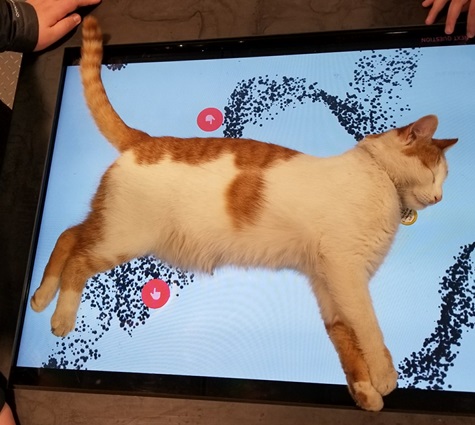10 Ratios, Rates, Proportions
As we saw in the previous module, a percent is a fraction that compares a number to 100. This is an example of a ratio. In this module, we will focus on ratios and rates, which look like fractions, and then we’ll finish up with proportions, which look like two fractions set equal to each other. Many of the examples in this module can be worked without a calculator, while others are best done with a calculator because you’ll be multiplying big numbers or dividing messy decimals. You can ask your instructor for guidance if you aren’t sure whether a calculator is appropriate.
Ratios & Rates
A ratio is the quotient of two numbers or the quotient of two quantities with the same units. (Pop quiz… Which operation gives you a quotient: addition, subtraction, multiplication, or division?)
When writing a ratio as a fraction, the first quantity is the numerator and the second quantity is the denominator. If the fraction can be simplified, reduce it to lowest terms.
Exercises
- Find the ratio of
 minutes to
minutes to  hours. Simplify the fraction, if possible.
hours. Simplify the fraction, if possible.
A rate is the quotient of two quantities with different units. You must include the units.
When writing a rate as a fraction, the first quantity is the numerator and the second quantity is the denominator. If the fraction can be simplified, reduce it to lowest terms.
Exercises
- A car travels
 miles in
miles in  hours. Write the rate as a fraction.
hours. Write the rate as a fraction.
Unit Rates
For practical purposes, expressing a rate as a reduced fraction is not always useful. Expressing a rate as a single number with units such as miles per hour is often more meaningful. This is called a unit rate because it expresses the quantity in the numerator that corresponds to one unit of the denominator.
To find the unit rate, divide the numerator by the denominator and express the rate as a mixed number or decimal. The units can be expressed with the word “per”: miles per hour, dollars per gallon, grams per deciliter, pounds per square inch, and so on.
Exercises
- A car travels
 miles in
miles in  hours. Write the car’s average speed as a unit rate.
hours. Write the car’s average speed as a unit rate.
A unit price is a rate with the price in the numerator and a denominator equal to ![]() . The unit price tells the cost of one unit or one item. To find the unit price, divide the cost by the size or number of items.
. The unit price tells the cost of one unit or one item. To find the unit price, divide the cost by the size or number of items.
You may use a calculator to calculate the unit price.
Exercises

- A 15.8-ounce box of Carmella Creeper cereal costs $5.29. Determine the unit price.
- An 18.8-ounce box of Count Chocula cereal costs $5.29. Determine the unit price.
- The Monster Cereals are on sale, 2 boxes for $9. If you buy a 16-ounce box of Franken Berry cereal and a 16-ounce box of Boo Berry cereal, what is the unit price per ounce?
Proportions
A proportion says that two ratios (or rates) are equal.
Exercises
Determine whether each proportion is true or false by simplifying each fraction.
A common method of determining whether a proportion is true or false is called cross-multiplying or finding the cross products. We multiply diagonally across the equal sign. In a true proportion, the cross products are equal.
Exercises
Determine whether each proportion is true or false by cross-multiplying.
As we saw in Module 7, we can use a variable to stand for a missing number. If a proportion has a missing number, we can use cross multiplication to solve for the missing number. This is as close to algebra as we get in this textbook.
To solve a proportion for a variable:
- Set the cross products equal to form an equation of the form
 .
. - Isolate the variable by rewriting the multiplication equation as a division equation.
- Check the solution by substituting the answer into the original proportion and finding the cross products.
You may discover slightly different methods that you prefer. If you think “Hey, can’t I do this a different way?”, you’re probably right.
Exercises
Solve for the variable.





 (calculator recommended)
(calculator recommended)
Problems that involve rates, ratios, scale models, etc. can be solved with proportions. When solving a real-world problem using a proportion, be consistent with the units.
You may use a calculator for the remainder of this module if needed.
Exercises
- Tonisha drove her car
 miles and used
miles and used  gallons of gas. At this rate, how far could she drive using
gallons of gas. At this rate, how far could she drive using  gallons of gas?
gallons of gas? - Marcus worked
 hours and earned
hours and earned  . At the same rate of pay, how long would he have to work to earn
. At the same rate of pay, how long would he have to work to earn  ?
? - Taylor is trying to figure out the straight-line distance from Portland to Mt. Hood. On their map,
 inch represents
inch represents  miles. The distance between Portland and Mt. Hood on the map is pretty close to
miles. The distance between Portland and Mt. Hood on the map is pretty close to  inches. What is the actual distance?
inches. What is the actual distance? - Púki the cat lives in a Reykjavík bookstore and likes to sleep on a warm tabletop video screen. Suppose you have a picture of Púki that is
 pixels wide and
pixels wide and  pixels high but you need to reduce it in size so that it is
pixels high but you need to reduce it in size so that it is  pixels high. If the height and width are kept proportional, what is the width of the picture after it has been reduced?
pixels high. If the height and width are kept proportional, what is the width of the picture after it has been reduced?

That’s pronounced “pookee”, not “pyookee”.
a rate with a denominator equal to one
a rate with a cost in the numerator and a denominator equal to one
an unknown value that is usually represented by a letter

